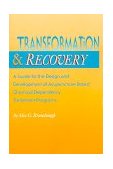Resources for Acupuncture in Chemical Dependency Treatment and Recovery

What is the history of how acupuncture began to be used in chemical dependency treatment?
The benefits of using auricular acupuncture in treating acute drug withdrawal was discovered in Hong Kong in 1972. It was used sporadically throughout the United States during the 1970's, and some experimentation with the method was done at the Haight Ashbury Free Clinic in San Francisco. But it was at Lincoln Hospital in New York under the leadership of Michael O. Smith, M.D. that the protocol used in most clinics today was developed. Smith's clinic in the South Bronx was primarily a methadone program in 1973 when he first read of Dr. H. L. Wen's research in Hong Kong concerning the treatment of heroin withdrawal with acupuncture. Dr. Wen, a neurosurgeon, had made his initial discovery while administering acupuncture anesthesia to a patient who happened to be in heroin withdrawal. The withdrawal symptoms disappeared, and Wen subsequently conducted a formalized study. By 1980, Wen had replicated the positive outcomes of his research and published several additional studies.
Wen's research had involved electrical stimulation as well, and Lincoln Hospital experimented extensively with electrostimulation protocols, eventually discontinuing its use when it was discovered that manual acupuncture resulted in more consistent clinical outcomes. A five-point auricular protocol was eventually established, including kidney, liver, lung (or heart), sympathetic, and shenmen. By 1975, acupuncture had become a permanent feature at the Lincoln program, not only for heroin dependence but for alcoholic patients as well.
In 1985, Smith and his colleagues founded the National Acupuncture Detoxification Association (NADA), an organization representative of experts in chemical dependency as well as Oriental medicine. NADA's function is to provide training and consultation to treatment programs that have begun throughout the world and to assure specific clinical and ethical standards in the certification of "acupuncture detox specialists." (click here for more detailed information)
previous
- Read FAQs in Sequence - next
Index of Articles - Links - Home
Scroll down for more FAQs
How many clients can be treated at once?
How often do clients need to be treated?
How long to clients have to keep having treatments?
Does it matter what time of day the acupuncture is provided?
What
national organizations support acupuncture in treating addiction? What
resources are available to support us if we decide to do it?
Does
the acupuncture program have to include herbs or nutritional supplements?
What
is the history of how acupuncture began to be used in chemical dependency
treatment?
What
does the acupuncture clinic look like exactly?
How
much space and extra equipment will we need to do it?
How
do we clean or dispose of the needles after they are used?
How
does acupuncture fit with drug testing?
How
do we find and train people to do the needling?
Could
we just try it experimentally to make sure it's a good fit for us?
What
technical assistance will be required to start and maintain an acupuncture
component?
Is
it compatible with harm reduction?
Is
it compatible with 12-Step or abstinence-based treatment approaches?
Is
it appropriate for mandated or court-referred clients?
Is
it appropriate for adolescents?
Is
it appropriate for pregnant women?
Is
it appropriate for people with co-morbid psychiatric problems?
Is
it appropriate for people with HIV/AIDS?
Is
it appropriate in methadone programs?
Is
it appropriate in residential programs?
What
training is required for current program and administrative staff?
What are the steps we should take to add an acupuncture component?